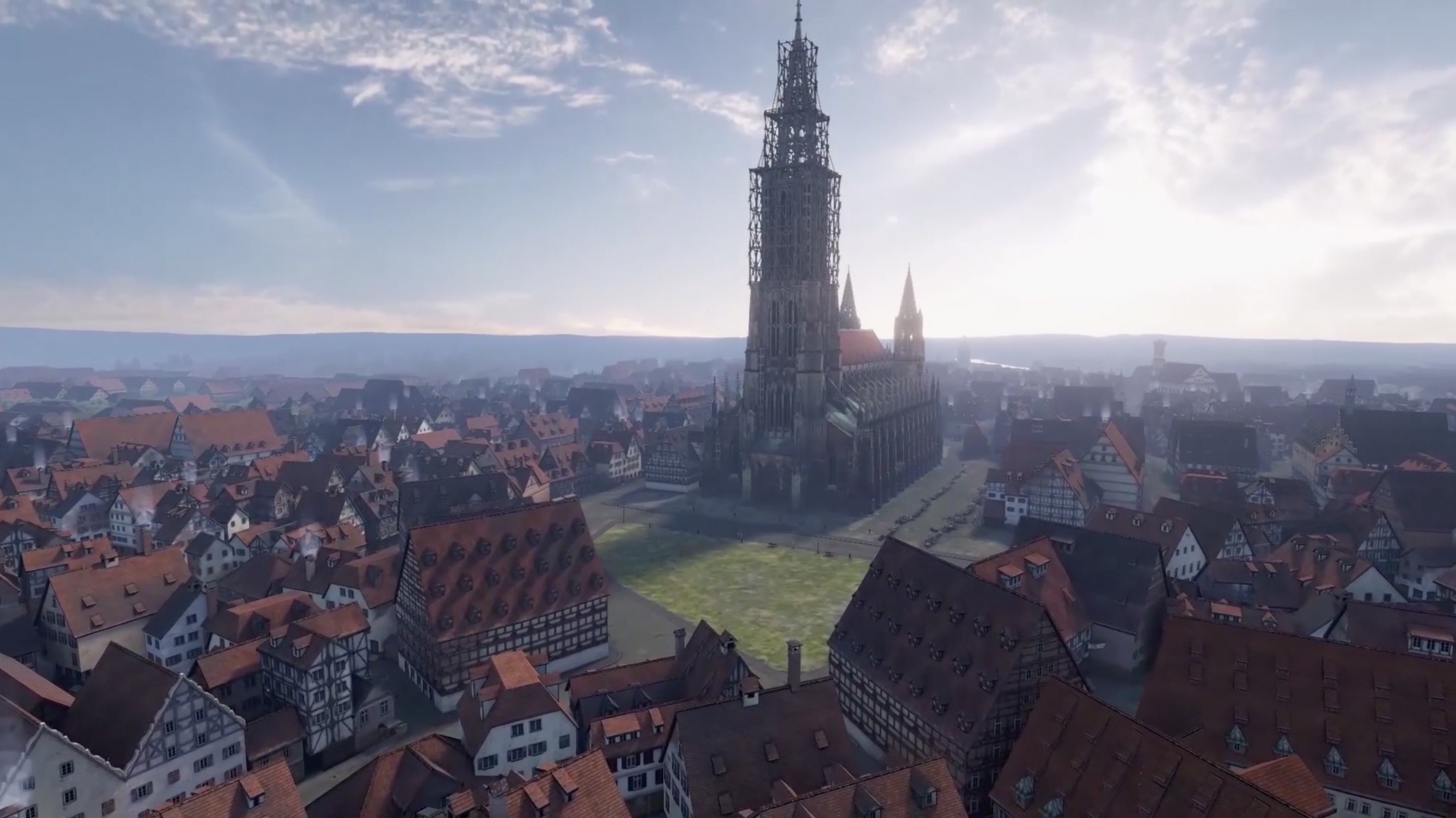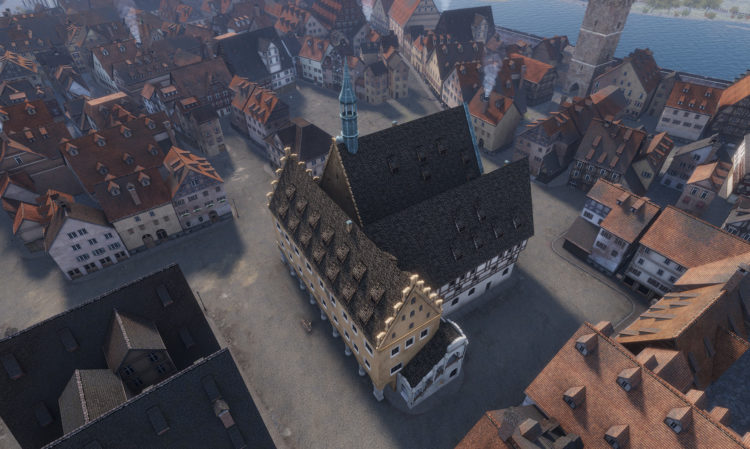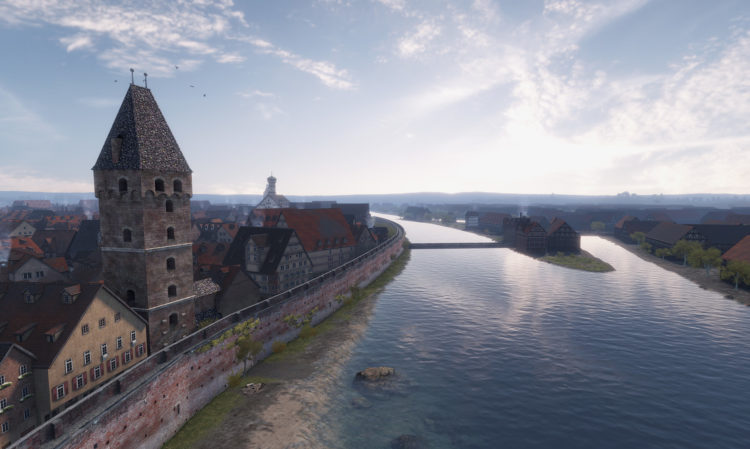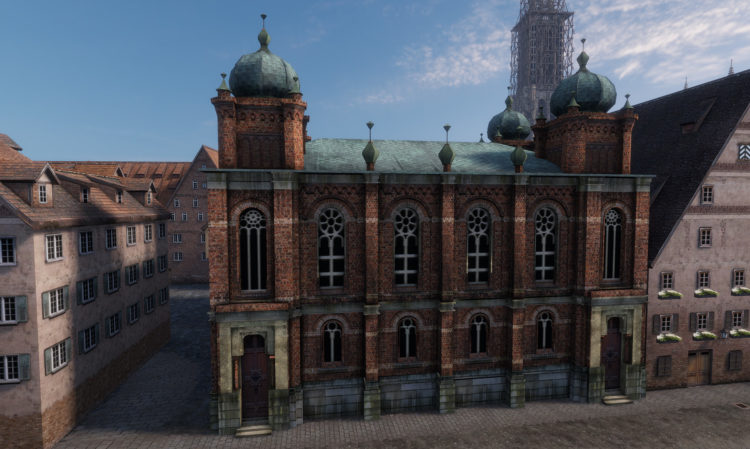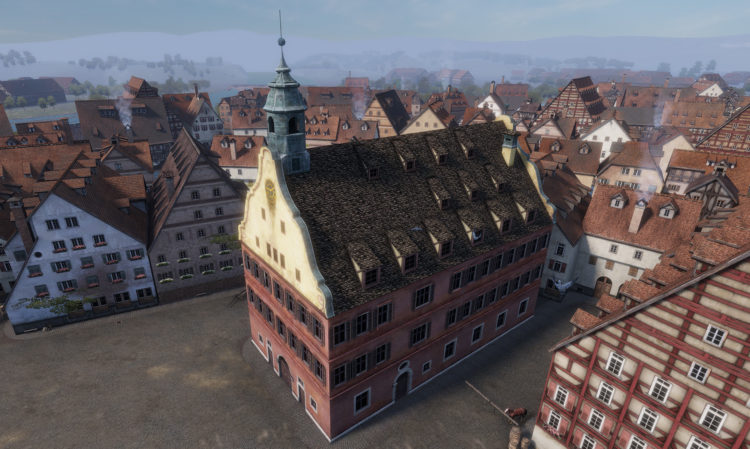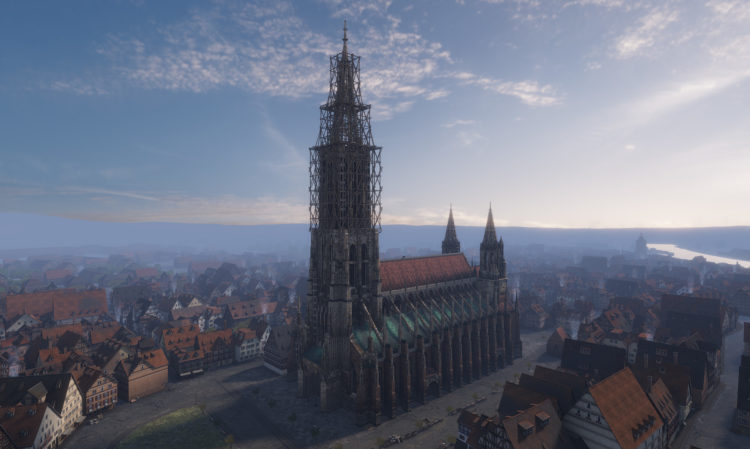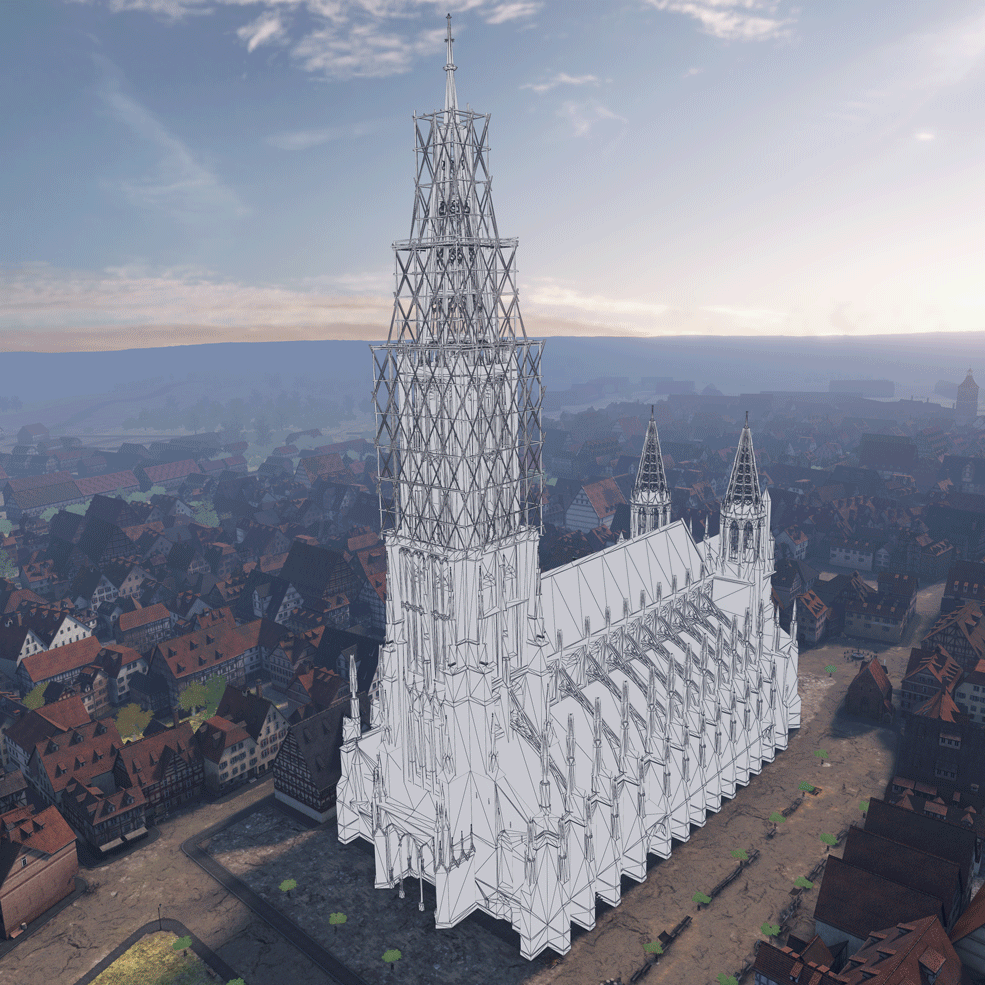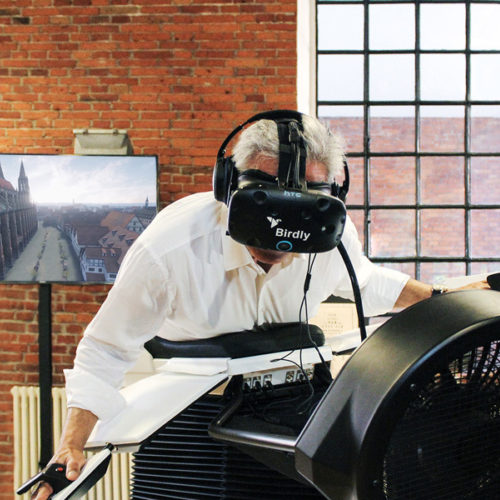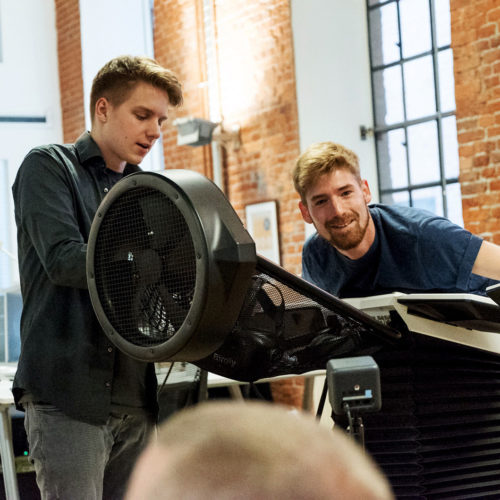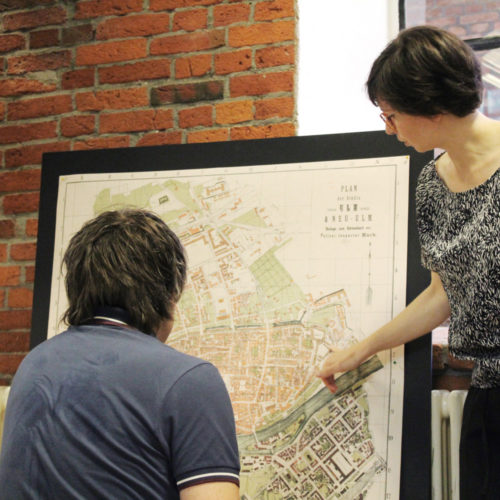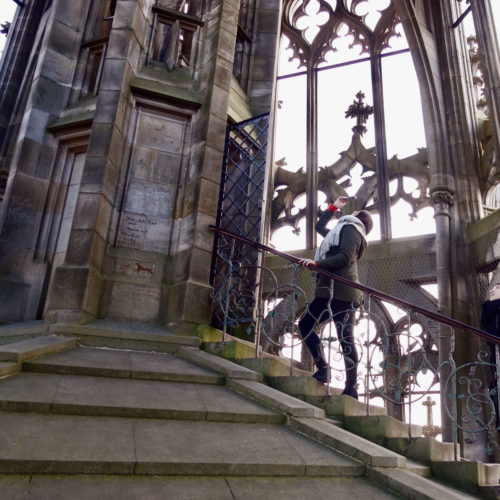Virtual Reality Ulm Experience
In collaboration with the Interactive Media Foundation, we were the first to develop a 3D world for the Birdly flight simulator. Through Virtual Reality, the user can explore the historic city of Ulm in 1890. At the heart of our experience is the highest steeple of the world – the Ulm Minster. A cathedral 500 years in the making.
Virtual City Planning
Our aim was to create a unique Virtual Reality Experience for all users. In the context of “The City of the Future 2030”, the installation is supposed to give both inhabitants and tourists of Ulm the chance to explore the historic city from a bird’s perspective. For this purpose, our concept, design and development teams became deeply acquainted with the city of Ulm and the action of flying. The idea and basic concept come from the Interactive Media Foundation, Berlin, which initiated the project for the city of Ulm.
Sensing Innovation and Technology
In order for the flight simulation to feel as authentic and powerful as possible, our focus was on excellent performance as well as a realistic and diverse presentation of the 3D world. During this process, finding the right balance between the stunningly detailed recreation of the Gothic architecture and the level of performance required for a smooth VR-experience in 90fps was always at the center of our attention. Only then will the user experience an indescribable moment of immersion.
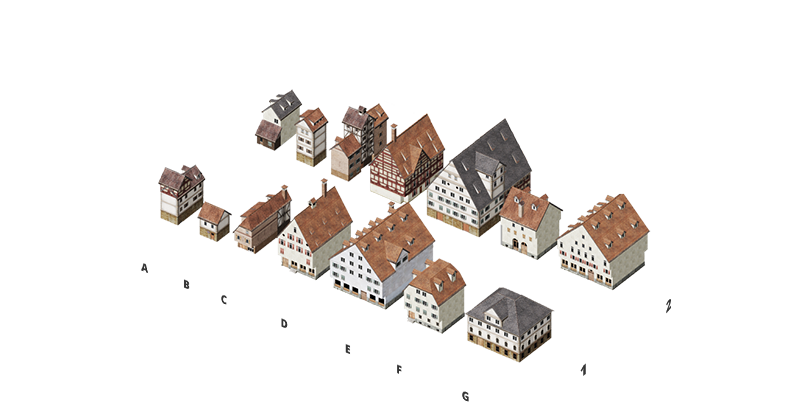
Wireframing a Virtual World
Creating a User Experience within the scope of a Virtual Reality project goes beyond the classical approach of wireframing. After defining a solid framework, we created the application as a small world the user can intuitively interact with. Metaphorically speaking, our approach is best described as a snow globe, setting the historic city of Ulm as the base of our framework. In such an open world scenario, the user can move about freely, or more precisely, fly without limits.
Out of the Ordinary UX
Some people fly in their dreams. Yet, what would the real experience of flying feel like? Our users virtually move at a speed of 14,7 m/s and at a hight of about 170 meters. Here, certain situations arose that needed to be solved for the user in a meaningful and positive manner: What happens when colliding with a facade during the Virtual Reality flight simulation?
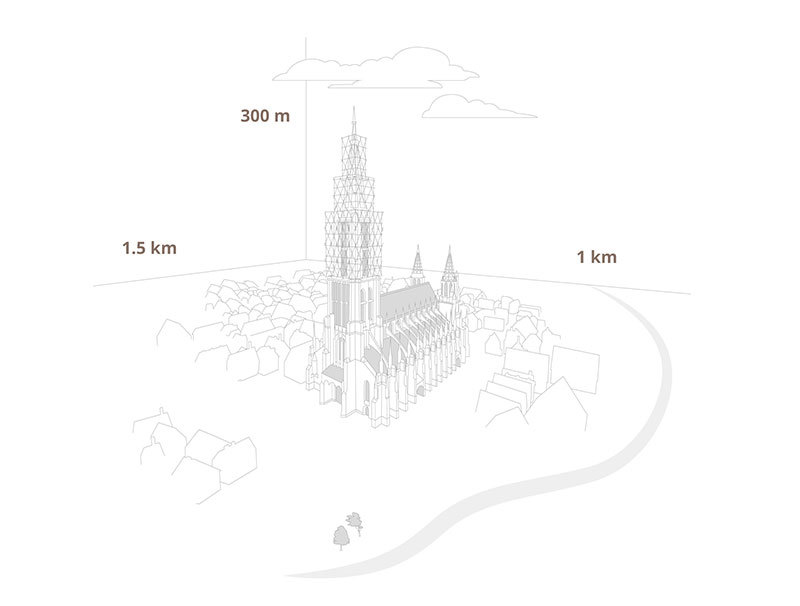
Atomic Design also applies to 3D
The secret to developing a performant application lies within modularity. During concept development, we defined a typology of buildings based on the most significant styles and architecture of that time. From this, our 3D-design team developed a house kit consisting of 45 models. The historic city has been modeled across an area of 1,5 km2 based on an original city map from 1890 provided by Ulm’s city archive. Around 2.000 historically correct houses have been placed by hand – one at a time.
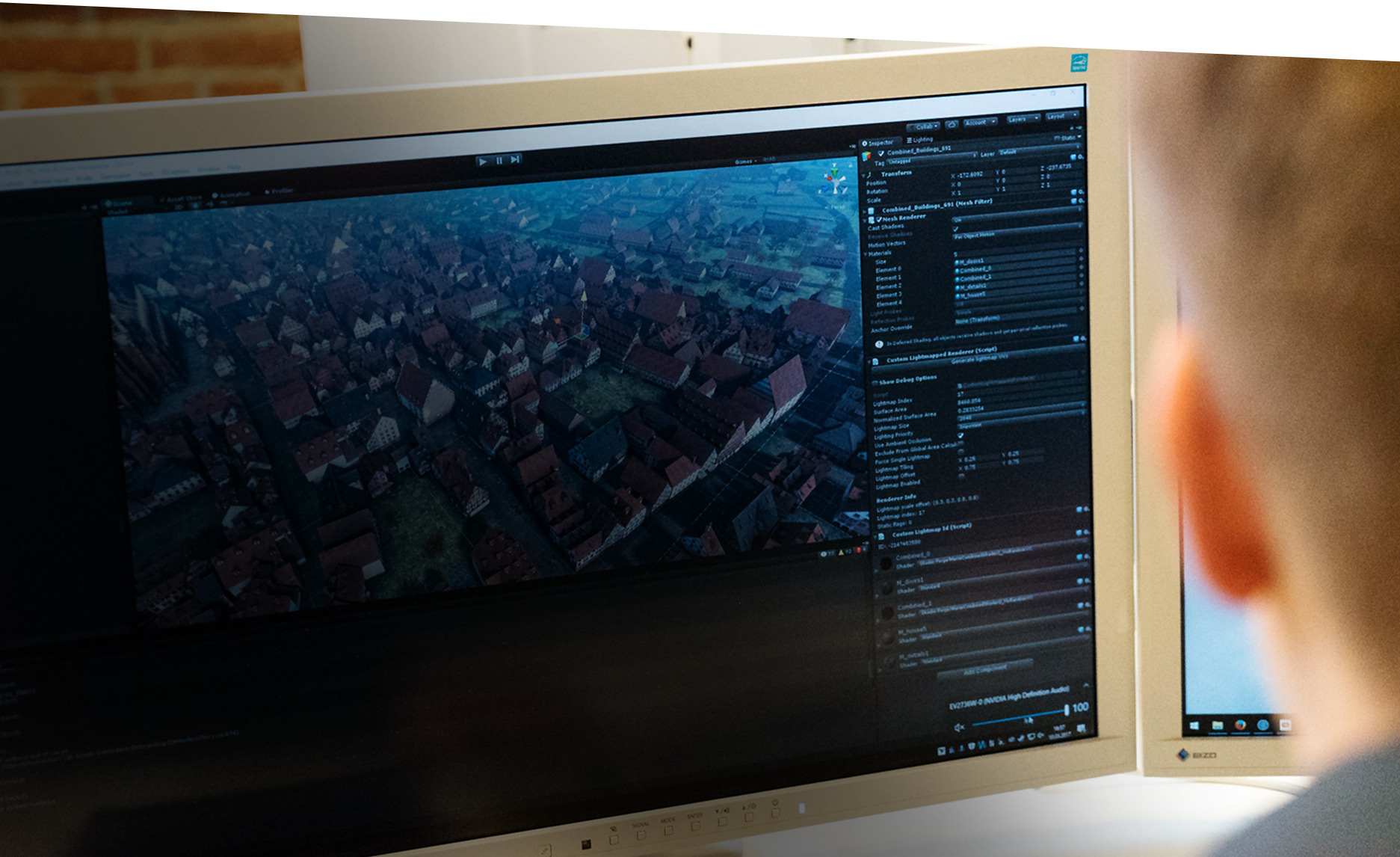
Game Level Complexity
During prototyping, we started with a Vertical Slice. This is a standardized approach commonly used in Game Design, at which only a few selected 3D elements are completely produced and integrated. This way, we were able to gain insights into the interplay of the achievable level of visual detail and the performance early in the process. We learned that the maximum number of polygons our 3D-team had at their disposal for recreating Ulm was eight million. Ultimately, the simplest house was composed of 160 and the most complex building out of 4.500 polygons.
Ulm Minster
Highlight par excellence: The Ulm Minster with 136.000 polygons. The biggest challenge was mainly the extensive reduction of performance-details as well as the three-dimensional modeling of a gothic, ornately decorated building. The main task during optimization is reduction in areas that the user does not visually notice. This requires a lot of effort as well as experienced 3D artists and interactive developers. In the end, Ulm’s head-architect had no complaints.
Testing & Development
In order to visualize the historical city of Ulm as realistic and impactful as possible, we programmed tailor-made shaders and produced lightmaps based on our own concept and art direction. Realistic, detailed lighting and shadow effects as well as their integration through high-performance presentation is essential. For this purpose, we installed a render farm with six servers to develop lightmaps in the most natural way. The integration of 50 self-produced 3D sounds completed the realistic feeling of flying. Our team spent more than 100 hours of testing the flight experience – adding up to four days of continuous flying.
Being on Cloud Nine
Within just six months we developed an application which sets a new benchmark in the field of Virtual Reality. In cooperation with the Interactive Media Foundation and SOMNIACS, we created a new chapter for the “Ulm Stories“ project. From now on, every visitor can tell his own story about his virtual flight through Ulm in 1890.
